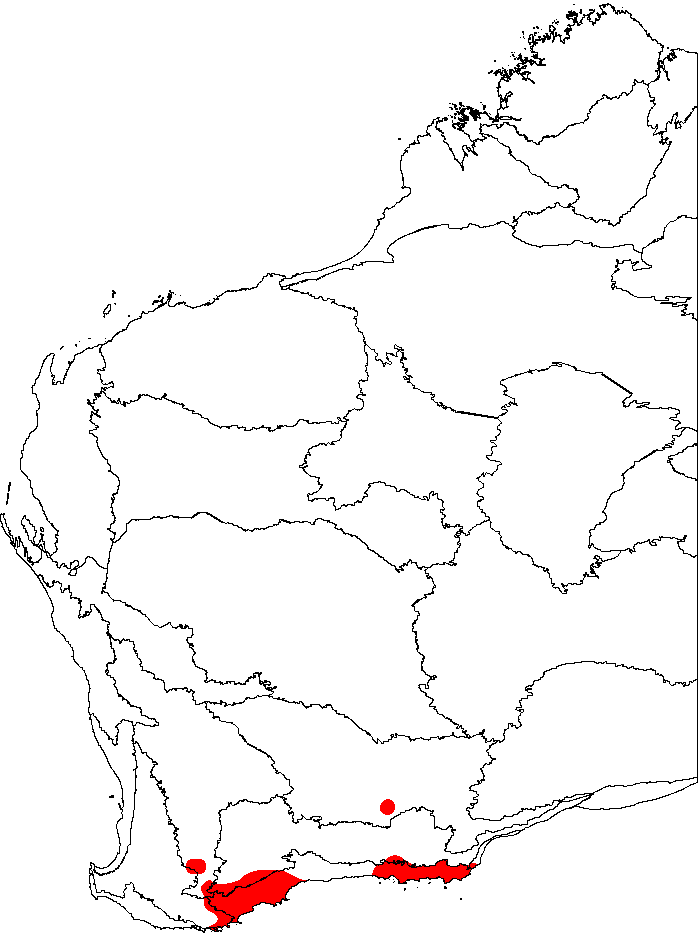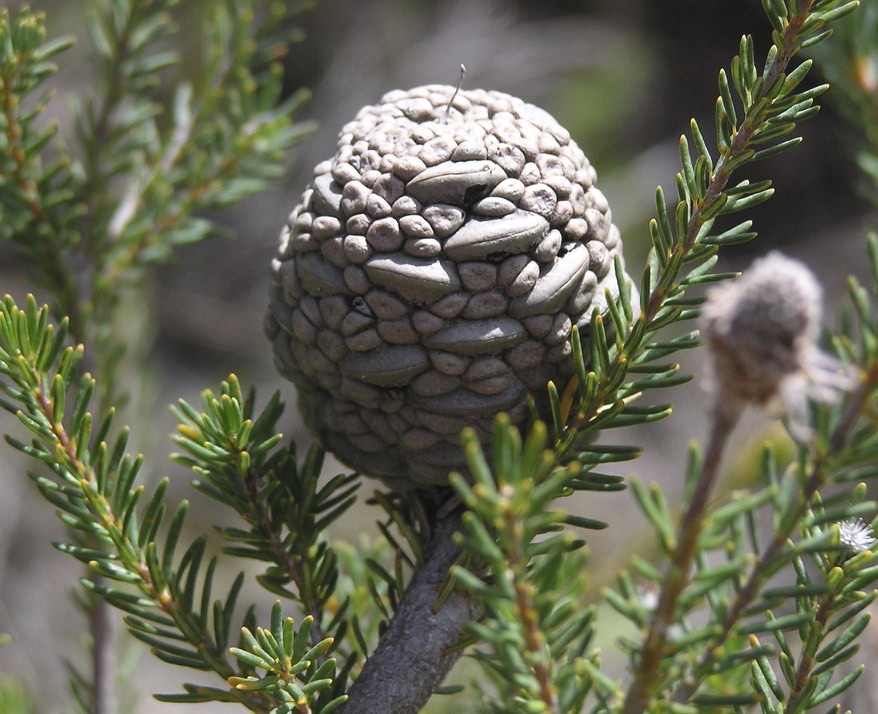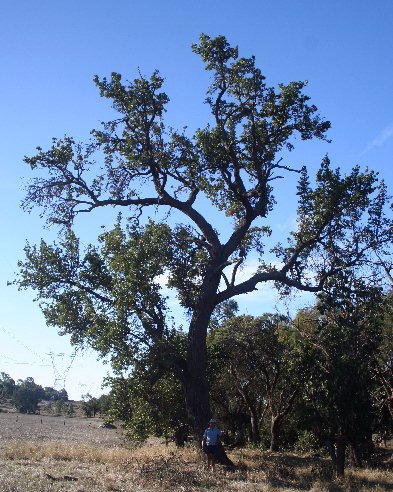|
Brown's Taxonomic Arrangement Of Banksia
Robert Brown's taxonomic arrangement of ''Banksia'' was published in his book of 1810, ''Prodromus Florae Novae Hollandiae et Insulae Van Diemen'', and expanded in the supplement to that publication, ''Supplementum Primum Prodromi Florae Novae Hollandiae'', in 1830. It was the first survey of ''Banksia'' species to be published, and included descriptions of a number of previously undescribed species. Background ''Banksia'' is a genus of around 175 species in the plant family Proteaceae. An iconic Australian wildflower and popular garden plant, they are recognised by their flower spikes or domes, and their fruiting "cones". They grow in forms varying from prostrate woody shrubs to trees up to 35 metres tall, and occur in all but the most arid areas of Australia. As heavy producers of nectar, they are important sources of food for nectariferous animals such as honeyeaters and honey possum, and they are of economic importance to the nursery and cut flower industries. However they are ... [...More Info...] [...Related Items...] OR: [Wikipedia] [Google] [Baidu] |
Robert Brown (botanist, Born 1773)
Robert Brown (21 December 1773 – 10 June 1858) was a Scottish botanist and paleobotanist who made important contributions to botany largely through his pioneering use of the microscope. His contributions include one of the earliest detailed descriptions of the cell nucleus and cytoplasmic streaming; the observation of Brownian motion; early work on plant pollination and fertilisation, including being the first to recognise the fundamental difference between gymnosperms and angiosperms; and some of the earliest studies in palynology. He also made numerous contributions to plant taxonomy, notably erecting a number of plant families that are still accepted today; and numerous Australian plant genera and species, the fruit of his exploration of that continent with Matthew Flinders. Early life Robert Brown was born in Montrose on 21 December 1773, in a house that existed on the site where Montrose Library currently stands. He was the son of James Brown, a minister in the ... [...More Info...] [...Related Items...] OR: [Wikipedia] [Google] [Baidu] |
Banksia Nutans
''Banksia nutans'', commonly known as nodding banksia, is a species of shrub native to the south coast of Western Australia in the genus ''Banksia''. Growing to a metre (3 ft) tall, it has pale blue-green fine-leaved foliage and unusual purple-brown inflorescences which hang upside down rather than grow upright like most other banksias. It is one of many banksias first described by the botanist Robert Brown in the early 19th century. It is not commonly seen in cultivation. Readily grown in areas with Mediterranean climates, its sensitivity to dieback makes it short-lived in climates of summer humidity such as Sydney. Description It grows as a shrub up to one metre tall, without a lignotuber. Its bark peels in thin red and grey flakes. Leaves are 10 to 2 centimetres long and 0.5 to 1.5 millimetres long, on a petiole two to three millimetres long. Flowers are pinkish-purple in bud, purplish-brown after anthesis, and smell of onion. They occur in flower spikes from four to s ... [...More Info...] [...Related Items...] OR: [Wikipedia] [Google] [Baidu] |
Banksia Sphaerocarpa
''Banksia sphaerocarpa'', commonly known as the fox banksia or round-fruit banksia, is a species of shrub or tree in the plant genus ''Banksia'' (family Proteaceae). It is generally encountered as a high shrub, and is usually smaller in the north of its range. This species has narrow green leaves, and brownish, orange or yellow round flower spikes which may be seen from January to July. It is widely distributed across the southwest of Western Australia, growing exclusively in sandy soils. It is usually the dominant plant in scrubland or low woodland. It is pollinated by, and is a food source for, birds, mammals, and insects. First described in 1810 by botanist Robert Brown, ''B. sphaerocarpa'' has a complicated taxonomic history, and several taxa once classified as part of a broadly defined ''B. sphaerocarpa'' have since been named as species in their own right. At present, most authorities recognise five varieties; the largest variety, ''B. sphaerocarpa'' var. ... [...More Info...] [...Related Items...] OR: [Wikipedia] [Google] [Baidu] |
Banksia Pulchella
''Banksia pulchella'', commonly known as teasel banksia, is a species of small shrub that is endemic to the south-west of Western Australia. It has smooth grey bark, linear leaves and golden-brown flowers in short, cylindrical heads and inconspicuous follicles. Description ''Banksia pulchella'' is a shrub that typically grows to a height of and has smooth grey bark but does not form a lignotuber. The leaves are narrow linear, long and about wide on a petiole long. The leaves have a sharp point on the tip. The flowers are golden-brown with bright yellow styles and are arranged in short cylindrical heads long and wide at flowering. There are small involucral bracts at the base of the head but that fall off as the flowers develop. The perianth is long and the pistil long and hooked. Flowering occurs in January, March or May to October. The follicles are long, up to high and wide and inconspicuous, although the old flowers fall from the head. Taxonomy and naming ''Ba ... [...More Info...] [...Related Items...] OR: [Wikipedia] [Google] [Baidu] |
Banksia Verae
''Banksia'' subg. ''Banksia'' is a valid botanic name for a subgenus of ''Banksia''. As an autonym (botany), autonym, it necessarily contains the type species of ''Banksia'', ''Banksia serrata, B. serrata'' (Saw Banksia). Within this constraint, however, there have been various circumscriptions. ''Banksia verae'' ''B.'' subg. ''Banksia'' can be traced back to ''Banksia verae'', an unranked taxon published by Robert Brown (botanist, born 1773), Robert Brown in his 1810 ''Prodromus Florae Novae Hollandiae et Insulae Van Diemen''. Under Brown's taxonomic arrangement of Banksia, Brown's arrangement, ''Banksia'' was divided into two groups based on inflorescence shape. ''Banksia verae'' was defined as containing those ''Banksia'' taxa with the elongate flower spike typical of ''Banksia'', and it thus contained all but one species. The remaining species, ''Banksia ilicifolia, B. ilicifolia'' (Holly-leaved Banksia), has a dome-shaped head and so was placed alone in ''Isos ... [...More Info...] [...Related Items...] OR: [Wikipedia] [Google] [Baidu] |
Isostylis
''Banksia'' subg. ''Isostylis'' is a subgenus of ''Banksia''. It contains three closely related species, all of which occur only in Southwest Western Australia. Members of subgenus ''Isostylis'' have dome-shaped flower heads that are superficially similar to those of ''B.'' ser. ''Dryandra'', but structurally more like reduced versions of the "flower spikes" characteristic of most other ''Banksia'' taxa. There are three species of ''Banksia'' subg. ''Isostylis'', ''B. ilicifolia'' (holly-leaved banksia), ''B. cuneata'' (matchstick banksia) and ''B. oligantha'' (Wagin banksia). ''B. ilicifolia'' is widely distributed and relatively common, but the other two species are rare and threatened. Description ''Banksia'' subg. ''Isostylis'' shares with ''B.'' ser. ''Dryandra'' the property of having compact, dome-shaped flower heads. Structurally, however, ''Isostylis'' flower heads are quite different from those of ''B.'' ser. ''Dryandra'', ... [...More Info...] [...Related Items...] OR: [Wikipedia] [Google] [Baidu] |
Banksia Ilicifolia
''Banksia ilicifolia'', commonly known as holly-leaved banksia, is a tree in the family Proteaceae. Endemic to southwest Western Australia, it belongs to ''Banksia'' subg. ''Isostylis'', a subgenus of three closely related ''Banksia'' species with inflorescences that are dome-shaped heads rather than characteristic ''Banksia'' flower spikes. It is generally a tree up to tall with a columnar or irregular habit. Both the scientific and common names arise from the similarity of its foliage to that of the English holly ''Ilex aquifolium''; the glossy green leaves generally have very prickly serrated margins, although some plants lack toothed leaves. The inflorescences are initially yellow but become red-tinged with maturity; this acts as a signal to alert birds that the flowers have opened and nectar is available. Robert Brown described ''Banksia ilicifolia'' in 1810. Although ''Banksia ilicifolia'' is variable in growth form, with low coastal shrubby forms on the south coast nea ... [...More Info...] [...Related Items...] OR: [Wikipedia] [Google] [Baidu] |
Banksia Ser
''Banksia'' is a genus of around 170 species in the plant family Proteaceae. These Australian wildflowers and popular garden plants are easily recognised by their characteristic flower spikes, and fruiting "cones" and heads. ''Banksias'' range in size from prostrate woody shrubs to trees up to 30 metres (100 ft) tall. They are found in a wide variety of landscapes: sclerophyll forest, (occasionally) rainforest, shrubland, and some more arid landscapes, though not in Australia's deserts. Heavy producers of nectar, ''banksias'' are a vital part of the food chain in the Australian bush. They are an important food source for nectarivorous animals, including birds, bats, rats, possums, stingless bees and a host of invertebrates. Further, they are of economic importance to Australia's nursery and cut flower industries. However, these plants are threatened by a number of processes including land clearing, frequent burning and disease, and a number of species are rare and endangered. ... [...More Info...] [...Related Items...] OR: [Wikipedia] [Google] [Baidu] |
Pacific Ocean
The Pacific Ocean is the largest and deepest of Earth's five oceanic divisions. It extends from the Arctic Ocean in the north to the Southern Ocean (or, depending on definition, to Antarctica) in the south, and is bounded by the continents of Asia and Oceania in the west and the Americas in the east. At in area (as defined with a southern Antarctic border), this largest division of the World Ocean—and, in turn, the hydrosphere—covers about 46% of Earth's water surface and about 32% of its total surface area, larger than Earth's entire land area combined .Pacific Ocean . '' Britannica Concise.'' 2008: Encyclopædia Britannica, Inc. The centers of both the |
James Cook
James Cook (7 November 1728 Old Style date: 27 October – 14 February 1779) was a British explorer, navigator, cartographer, and captain in the British Royal Navy, famous for his three voyages between 1768 and 1779 in the Pacific Ocean and to New Zealand and Australia in particular. He made detailed maps of Newfoundland prior to making three voyages to the Pacific, during which he achieved the first recorded European contact with the eastern coastline of Australia and the Hawaiian Islands, and the first recorded circumnavigation of New Zealand. Cook joined the British merchant navy as a teenager and joined the Royal Navy in 1755. He saw action in the Seven Years' War and subsequently surveyed and mapped much of the entrance to the St. Lawrence River during the siege of Quebec, which brought him to the attention of the Admiralty and the Royal Society. This acclaim came at a crucial moment for the direction of British overseas exploration, and it led to his commission in ... [...More Info...] [...Related Items...] OR: [Wikipedia] [Google] [Baidu] |
HM Bark Endeavour
HMS ''Endeavour'' was a British Royal Navy research vessel that Lieutenant James Cook commanded to Australia and New Zealand on his first voyage of discovery from 1768 to 1771. She was launched in 1764 as the collier ''Earl of Pembroke'', with the Navy purchasing her in 1768 for a scientific mission to the Pacific Ocean and to explore the seas for the surmised ''Terra Australis Incognita'' or "unknown southern land". Commissioned as His Majesty's Bark ''Endeavour'', she departed Plymouth in August 1768, rounded Cape Horn and reached Tahiti in time to observe the 1769 transit of Venus across the Sun. She then set sail into the largely uncharted ocean to the south, stopping at the islands of Huahine, Bora Bora, and Raiatea west of Tahiti to allow Cook to claim them for Great Britain. In September 1769, she anchored off New Zealand, becoming the first European vessel to reach the islands since Abel Tasman's ''Heemskerck'' 127 years earlier. In April 1770, ''Endeavour'' becam ... [...More Info...] [...Related Items...] OR: [Wikipedia] [Google] [Baidu] |
.jpg)




.jpg)

